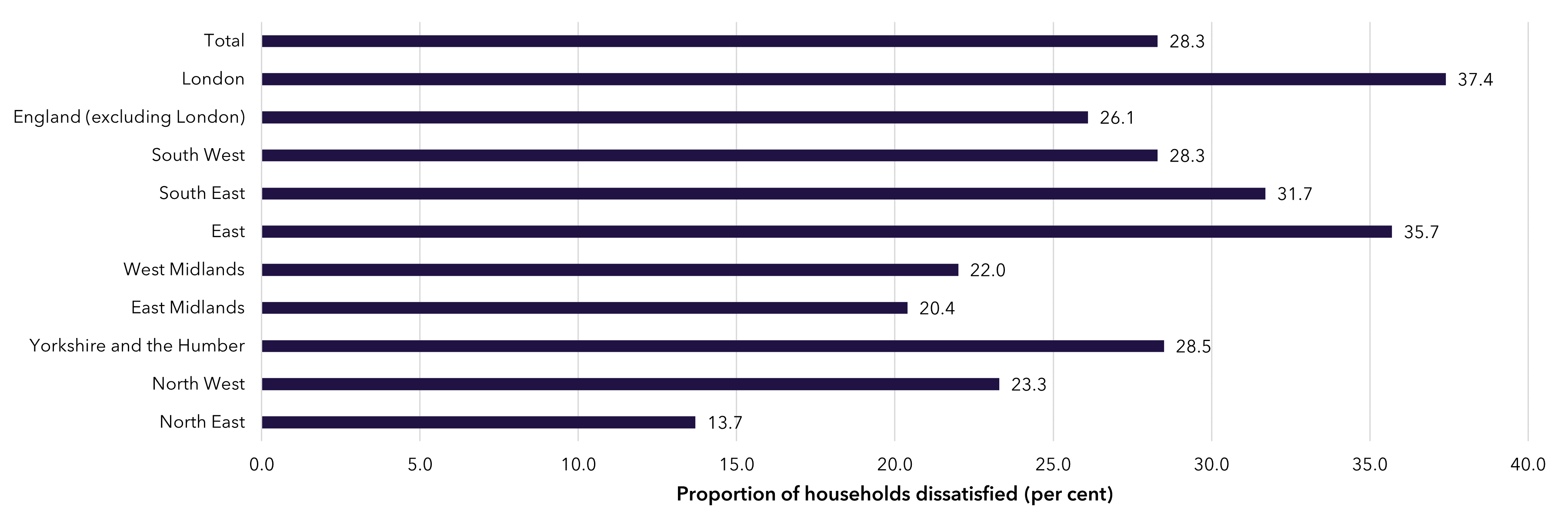The BSHR found that resident dissatisfaction in the social housing sector was very evident from discussions the panel had with residents.
For many years, however, the exact extent of this dissatisfaction was difficult to quantify. Detailed data on levels of resident satisfaction with repairs and maintenance services was not available, a fact that undoubtedly contributed to sector and government ignorance of the severity of damp and mould issues.
According to the English Housing Survey (EHS), the prevalence of damp in English housing has hovered at around four per cent for over a decade, following a substantial decrease from 1996. In July 2023, the EHS included a new module on ‘Satisfaction and Complaints’ that quantified resident dissatisfaction with repairs and maintenance services in social housing.
The data showed that 28 per cent of social rented households – over 1.1 million in total – were dissatisfied with the repairs and maintenance services provided by their landlord. Satisfaction levels also varied quite considerably across England, ranging from 52 per cent in London to 82 per cent in the North East of England.
Residents with a long-term illness or disability were also more likely to be dissatisfied with the repairs and maintenance services provided by their landlord, and outcomes also varied by ethnicity, with Asian households far more likely to be dissatisfied than other groups.
The EHS also collected data on the main reasons for household dissatisfaction. In the social housing sector, the main reasons given were that the ‘landlord does not bother’ and that the ‘landlord is slow to get things done’. A not insignificant proportion of social rented households also said they were dissatisfied because the work done was of a poor quality, or that their landlord only does the bare minimum.

This data will be deepened significantly when the first results of Tenant Satisfaction Measures (TSMs) are published in 2024. This will tell us resident satisfaction with repairs, as well as satisfaction with the time taken to complete their most recent repair and how well maintained their home is. Going forwards, tracking changes in the TSMs over time is the main way we will be able to understand if repairs and maintenance services are improving.
Until then, the EHS data is a necessary reminder of the importance of working with our residents to understand what has gone wrong in the past, and how it can be put right in the future.


